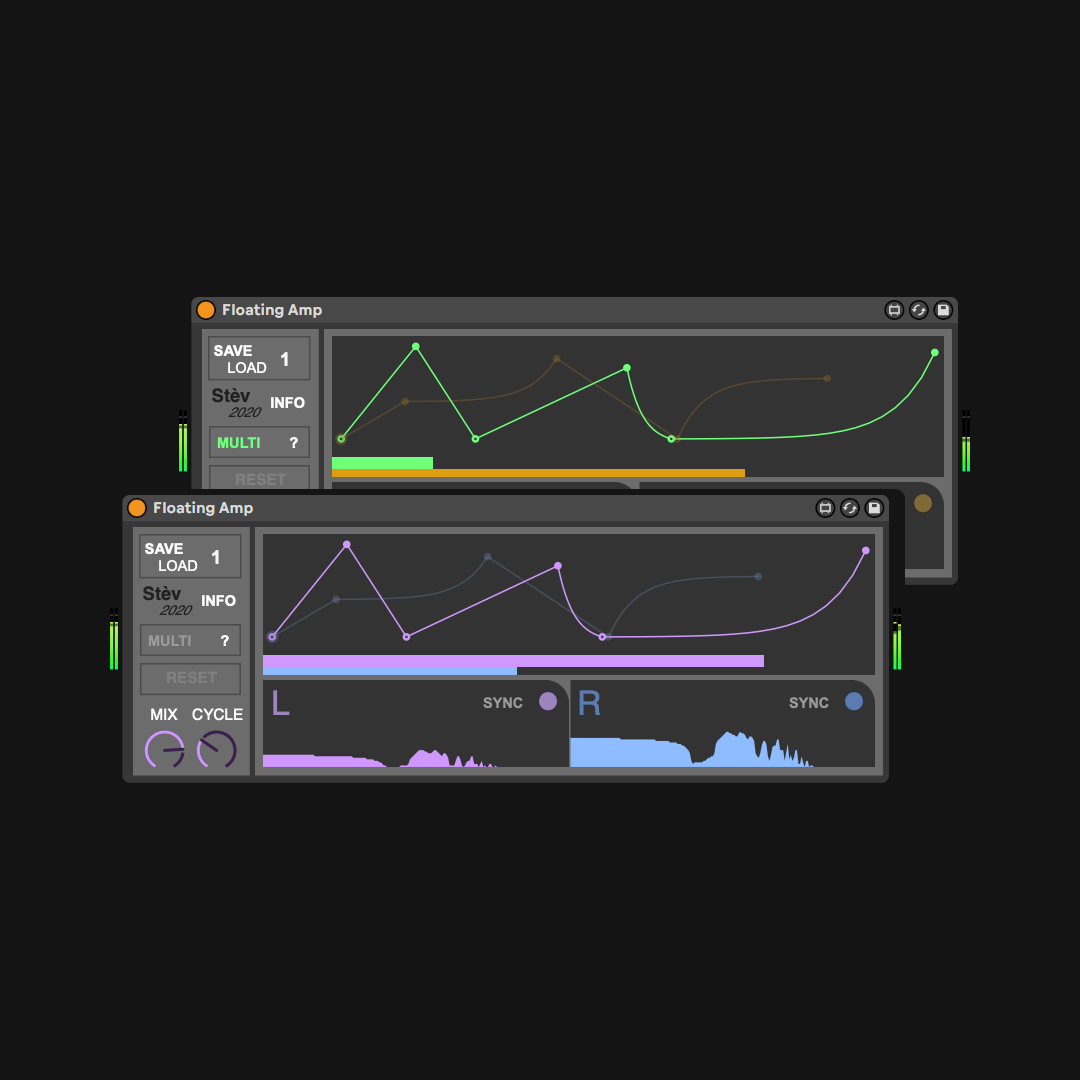Device Details
Overview
| Name | Version: | Floating Amp 1.8 |
| Author: | stefanostev |
| Device Type: | Audio Effect |
| Description: | Simple Max For Live patch which implements the concept of unquantized amplitude variations. This patch was created to evolve pads, drones and any kind of long sustained sound throughout time, but interesting results may come out by applying it to any kind of different dynamics. The concept is pretty straightforward: two graphs allow the user to draw independent cycling envelopes for Left and Right channel of any incoming audio signal. Clicking on L or R will focus on the respective channel curve editor. Click to add a point, drag a point to shape the envelope, click+shift on a point to delete it, click+alt and drag on a segment to curve it exponentially or logarithmically. The first point of each envelope is fixed and cannot be moved. CYCLE controls the length of the complete course of both graphs (the higher the value, the longer the time it takes to the envelope to complete and repeat itself), but it's important to note that each graph cycles through the first and the last point (which doesn't necessarily have to match its extreme boundary), allowing to create different durations for each channel. The button SYNC allows the relative graph to send a global trigger for both envelopes at the end of its cycle. The flashing led button is clickable and re-triggers the corresponding envelope, whilst RESET re-triggers both at once. MIX controls the balance between the dry and the wet signal. 12 slots of memory are available to store and recall any particular settings of the graphs. MULTI routes each envelope to a separate audio channel. Ableton Live 10 or higher required. To listen to separate signals, activate MULTI, open a new audio track in Ableton Live then use the Audio From dropdown menu to choose the track where the device is located and the corresponding input channels. When MULTI is on, the interface theme changes in order to make the selected mode clearly visible. Live only accepts stereo channels for internal routing: - L channel goes to channels 3/4; - R channel goes to channels 5/6. The dry signal is always output from the device main channels. |
Details
| Live Version Used: | 10.1 |
| Max Version Used: | 8.1 |
| Date Added: | Feb 25 2020 12:08:59 |
| Date Last Updated: | Apr 21 2021 13:28:39 |
| Downloads: | 1464 |
| ⓘ License: | AttributionNonCommercialShareAlike |
Average Rating
(1) Log in to rate this device |
5 |
Files
| Device File: | Floating Amp.amxd |
Comments
Hello! The starting point is static by design, to avoid extreme clips across envelope's cycles. On the other hand, it is possible to add a second break point just next to it and place it at the desired value (this would mimic the attack value). About the pre-existing waveforms, I didn't really feel it being a compelling feature for this device, due to it's flexible and unquantized nature, so I left it out on purpose. But of course you can add it if you need it :)
Posted on August 22 2020 by stefanostev |
Report Issue
Login to comment on this device.
Browse the full library
Can't seems to really change the starting point height.
Would be nice to have pre existing waveforms as in the "shaper" m4l.
I'll try an edit